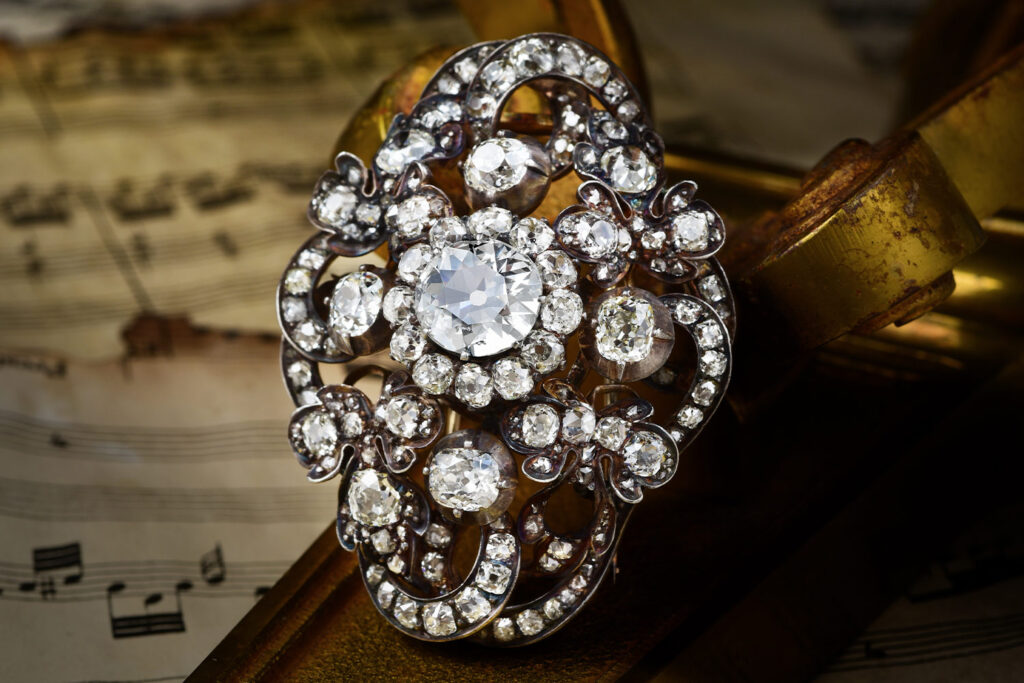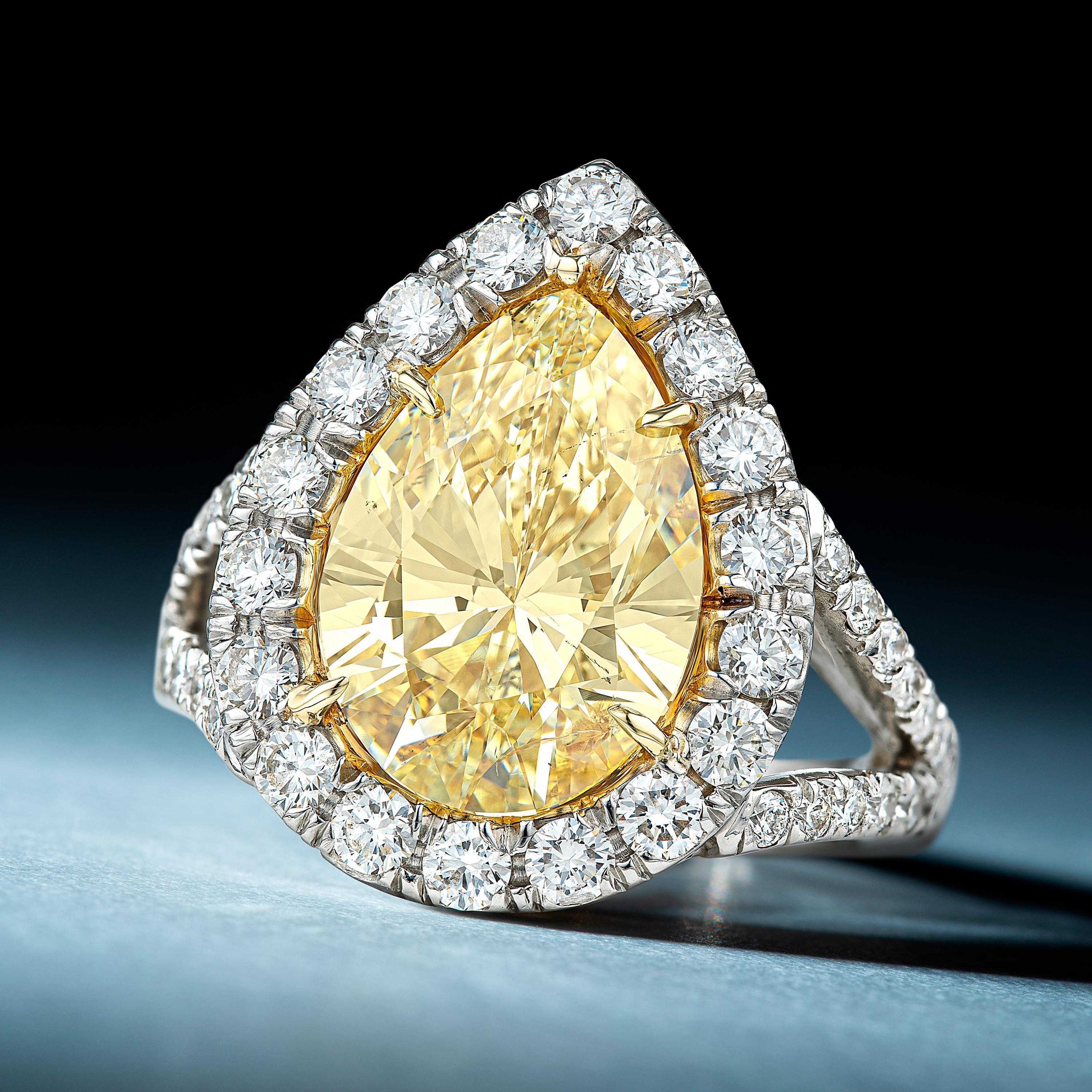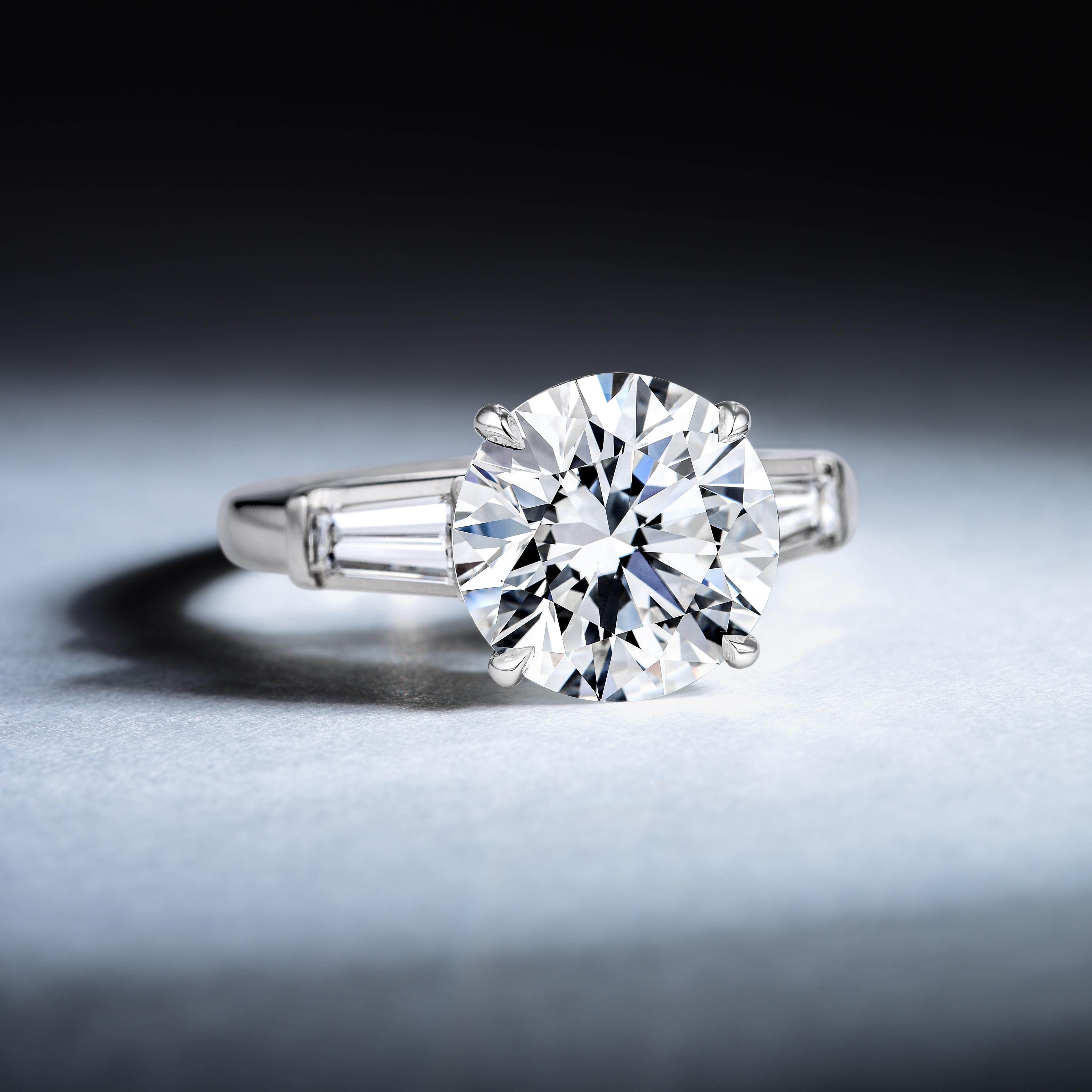When you submit your items for consignment at Fortuna, our jewelry experts will give you their best assessment as to what your piece would fetch at auction; there are many factors to consider, such as condition, age, provenance, quality, current market conditions, and rarity. After our primary assessment, we will then discuss with you the possibility of submitting your items for certification at the Gemological Institute of America (GIA).
What Is a GIA Report?
A GIA report is a worldwide recognized diamond grading report. A GIA diamond grading report breaks down the four characteristics of a diamond. It reports a scientific and unbiased assessment stating the diamond’s authenticity. It also states if the diamond has undergone any treatments.
The report provides information about the diamond for jewelry experts to use to provide a value for your jewelry. GIA diamonds provide more value to your diamond because the diamond now has factual information attached to it. GIA diamond grading allows you to know specific information about the diamond you may have not known before.
Why GIA?
Even if you’re not in the diamond industry, you’re probably familiar with the 4 C’s of diamond grading: Color, Clarity, Cut, and Carat Weight. These are objective values of a diamond’s characteristics used to determine the value of a diamond. This now internationally adopted metric was created by GIA, as such, they continue to be the most trusted diamond graders in the industry.
Having a certificate from GIA instills a sense of trust in prospective buyers, for industry professionals know all the extra work a GIA diamond grader puts into collecting information about your stone. They take your diamond or other precious stones out of their mounting and inspect them from every possible angle. A certificate from GIA will increase the value of your item, not because the item is suddenly any different, but because it has undergone a much more thorough inspection by multiple seasoned professionals. After your stones have been observed by all the available channels, your stones will be placed back in their original mounting, exactly how they were before; this is true for big stones on rings, and for small diamonds around a bracelet. GIA reports are not appraisals they are an objective assessment of a diamond’s quality, information which appraisers then use in assigning value.
In addition to a diamond’s 4Cs information, the Diamond Grading Report provides a plotted diagram of the stone’s clarity characteristics and a graphic representation of its proportions, information which serves to identify the individual stone.
How Do You Read a GIA Diamond Report?
Each GIA diamond report includes a unique number that can be used to look up the report online. The report has a GIA color scale ranging from D to Z.
- D-F: The diamond is colorless.
- G-J: The diamond has a little color, but is nearly colorless.
- K-M: There is a faint color that may be noticeable to the eye.
- N-R: Color in the diamond is considered very light.
- S-Z: Diamond is considered “light” or on the darker end of the scale.
GIA assesses the clarity of the diamond by looking for inclusions and surface blemishes. They include a clarity scale and will assign one of the 11 clarity grades based on amount, size, relief, nature and position. The most prominent clarity characteristics will be shown on a diagrams within the report with a key for each symbol used in the diagrams. GIA has a cut scale ranging from excellent to poor. The cut grade is assigned from seven components:
- Polish
- Symmetry
- Weight Ratio
- Durability
- Brightness
- Fire
- Scintillation
The GIA diamond grading report will also include a diagram detailing the exact profile and proportions of the diamond. All four main characteristics including the weight of the diamond in carats are stated in a concise summary under grading results on the report.
Who Does a GIA Diamond Report?
Employees from GIA conduct the GIA Diamond report. As members of GIA, they do not sell diamonds. GIA is an independent entity only looking at the exact qualities of the gem and providing a report of any changes that may have been made to the diamond. The members hired to investigate and grade the diamonds for the reports. These members include gemologists, research scientists and diamond graders.
A diamond goes through each type of expert to be cross-checked and analyzed for the most accurate information to be provided on the report GIA gives about each diamond and gem. Each expert will take the gem or diamond out of the mounting to get an accurate carat weight, clarity grade and color grade of the item. The jewel will be placed back into the mounting when the report is completed to look exactly the way it did when it was first sent to GIA.
Should I get a GIA Report before submitting my items for consignment?
The simple answer is, no. When submitting your items for consignment you should always send us any reports, certifications, proofs of purchase that you already have that could contribute to the value of your item. However, you don’t have to worry about sending your items to GIA, here at Fortuna we provide a preliminary assessment, and then through discussion with you, decide whether a GIA report is necessary to better sell your item. We will never take your item to GIA without your express permission. Once we have the go-ahead from you, we will personally take your item to GIA, pick it up when the report is finished, and make all the arrangements for carefully un-mounting and re-mounting your stone. GIA reports are not always necessary depending on the item, and they also take time to acquire. It is always best to get a professional opinion first, and with Fortuna, we help you take care of all the details.
Contact Fortuna Auction for more information about GIA diamond grading reports and the value of your item.



